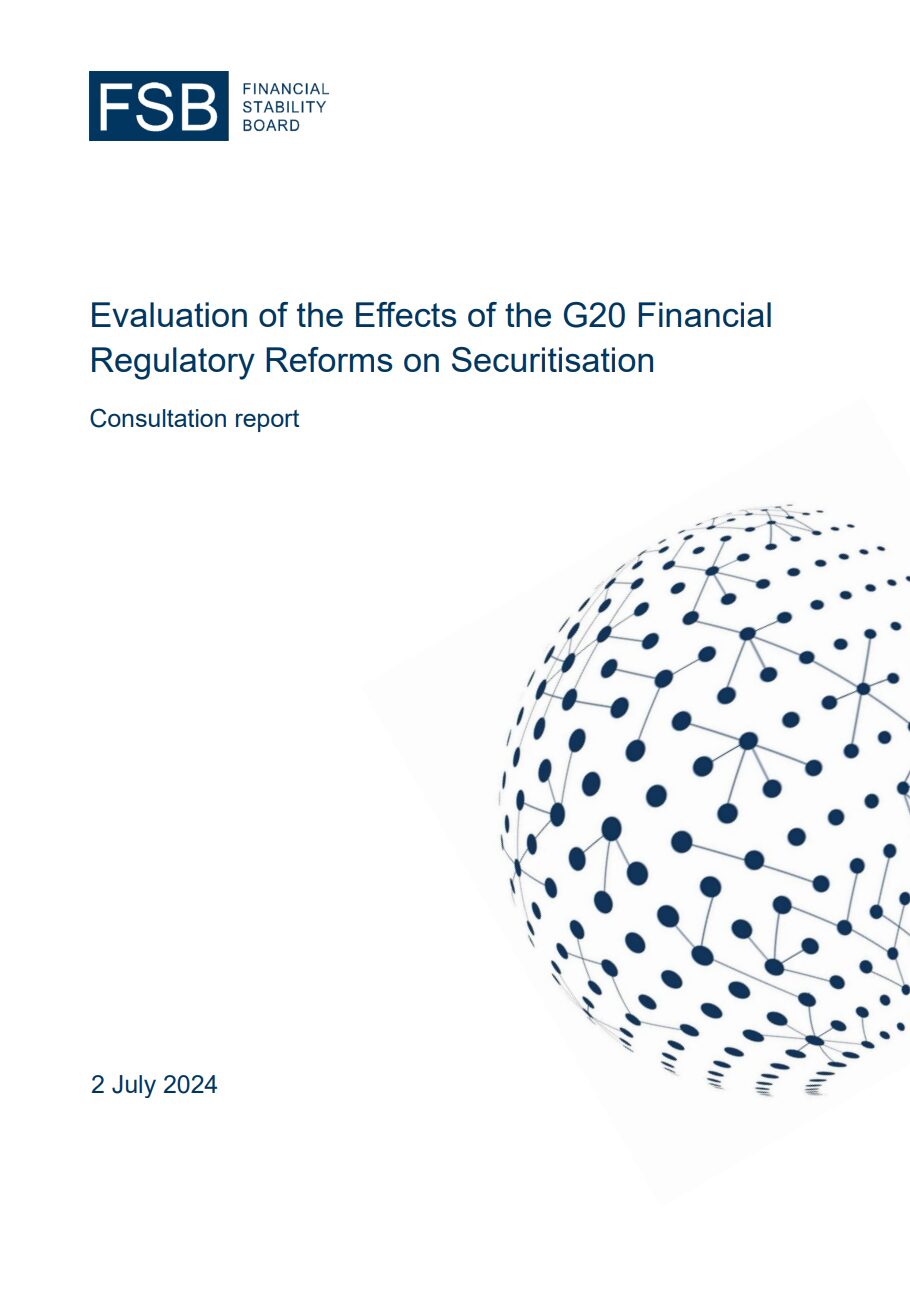Last week the Financial Stability Board, an emanation of the G20, published what it called a “consultation report”. The report is entitled “Evaluation of the Effects of the G20 Financial Regulatory Reforms on Securitisation”. At over 90 pages, we wanted to have a careful read before reporting on its content.
The first conclusion is that, notwithstanding the very broad title, the report is deliberately narrow in the topics it chooses to cover. The FSB explicitly states that it has focused solely – on the policy side – on the retention rules and the prudential capital requirements for bank investors. Other topics (such as capital requirements for insurers or disclosure requirements) are mentioned but are not analysed. On the market side, the FSB has also narrowed its analysis to CLO/CDOs and RMBS. Again ABS, CMBS, ABCP and other market segments are mentioned but not examined.
In the conclusions reached, the FSB has again sought to narrow the ambit of its analysis. When seeking to measure the impact of the G20 rules, it argues that any measurement of the longer term or even broad economic impact of the rules is both too speculative and beyond its (self-defined) mandate.
This limits its non-prudential impact analysis to whether the securitisation rules affected the overall volume of financing to the economy. Unsurprisingly, it concludes that it has not. We write “unsurprisingly” since the period covered was one that encompassed the deepest example of accommodative monetary policy ever witnessed in the modern era. It is difficult to see how any regulatory rule could have constrained the amount of liquidity available for lending. Whether this survives the new era of QT is open to question. Either way, whilst fully understanding the FSB’s reluctance to enter into a difficult and complex debate, a report seeking to analyse the impact of regulations without including the economic impacts does substantially limit its own value.
Another example of how the FSB reduced the scope of its analysis is by stating that, even though capital requirements for bank investors was one of the only two policies it chose to focus on, it would not engage in the debate on whether those requirements were properly calibrated.
So, what is to be obtained from reading the report?
First, it is a trove of data and statistics. Some are very interesting indeed, some definitely less so.
We should also commend the FSB for excluding agency securitisations, such as those of Fanny Mae in the US, from the analysis. The agency market is so different in its dynamics and rationale, that incorporating it in an analysis of securitisation is misleading and merely renders sensible conclusions extremely elusive.
Less defensible is the FSB’s conflating of retained and placed securitisations in Europe. By treating retained securitisations as part of the European “securitisation market”, they risk falling into the same trap as the one they avoided by excluding agency securitisations. In our view, retained securitisations are not part of the securitisation market and incorporating them in any analytical endeavour inaccurately flatters the health of the European market. Indeed, the distorting impact of including them is well illustrated by a graph that appears in the report (graph 6 on page 21, if you wish to check).
One fact that does emerge quite clearly from the report is the uneven manner in which the Basel rules have been implemented across the globe. It is interesting for example to muse that, if one sees China and the US as the main geo-political blocks competing with Europe, neither one has yet fully implemented Basel’s securitisations rules whilst Europe has. Also, interspersed through the report is evidence of Europe’s much more rigorous regulatory approach (eg on retention rules). This is an important fact to bear in mind when thinking about future reforms, especially around prudential rules.
Overall, the FSB considers the reforms to have added to financial stability whilst not unduly affecting lending, the very narrow and sole metric it chose to use. The FSB’s conclusions are also explicitly quite tentative. They do show a slight but definite bias toward the regulatory view of the world, for example when they point out (fairly, it must be said) that market participants that argued the regulations had negatively impacted finance had produced no empirical evidence to that effect, yet counter with the European Joint-Committee reports counter-arguments without mentioning that those counter-arguments also did not come accompanied by any empirical evidence.
The report is called a “consultation report” because it comes stapled to a consultation. The consultation questions are at the beginning of the document for those not wishing to go through the ninety one pages of the report. The consultation deadline is September 2, if anyone was wondering how to while away those quiet hours at the beach.

